#StudyInAustralia #StudyAbroadInAustralia #AustralianUniversities #TopUniversitiesInAustralia #StudyInAustraliaForInternationalStudents #AustraliaStudyGuide #EducationInAustralia #StudyVisaAustralia #AustralianStudentVisa #CostOfStudyingInAustralia #ScholarshipsInAustralia #BestCoursesInAustralia #WhyStudyInAustralia #LivingInAustraliaForStudents #StudyInAustraliaRequirements #StudyInAustraliaForIndianStudents #HigherEducationInAustralia #AustralianEducationSystem #AffordableUniversitiesInAustralia #StudyingAbroadInAustralia

Study in Australia: A Comprehensive Guide for Indian Student
Explore detail guide on Study in Australia for Indian Students. Reach out to SIEC for applications to study at top universities in Australia and apply for Visa.
https://www.siecindia.com/blogs/your-guide-to-study-in-australia#scholarshipstostudyabroad #StudyAbroadScholarships #InternationalScholarships #ScholarshipsForIndianStudentsAbroad #fullyfundedscholarshipsabroad #undergraduatescholarshipsabroad #postgraduatescholarshipsabroad #scholarshipsformastersabroad #PhDScholarshipsAbroad #governmentscholarshipstostudyabroad #ScholarshipsForInternationalStudents #BestScholarshipsToStudyAbroad #scholarshipsforoverseaseducation #FreeScholarshipsToStudyAbroad #scholarshipsforstudyingoverseas #meritbasedscholarshipsabroad #scholarshipsabroad #scholarshipstostudyoverseas
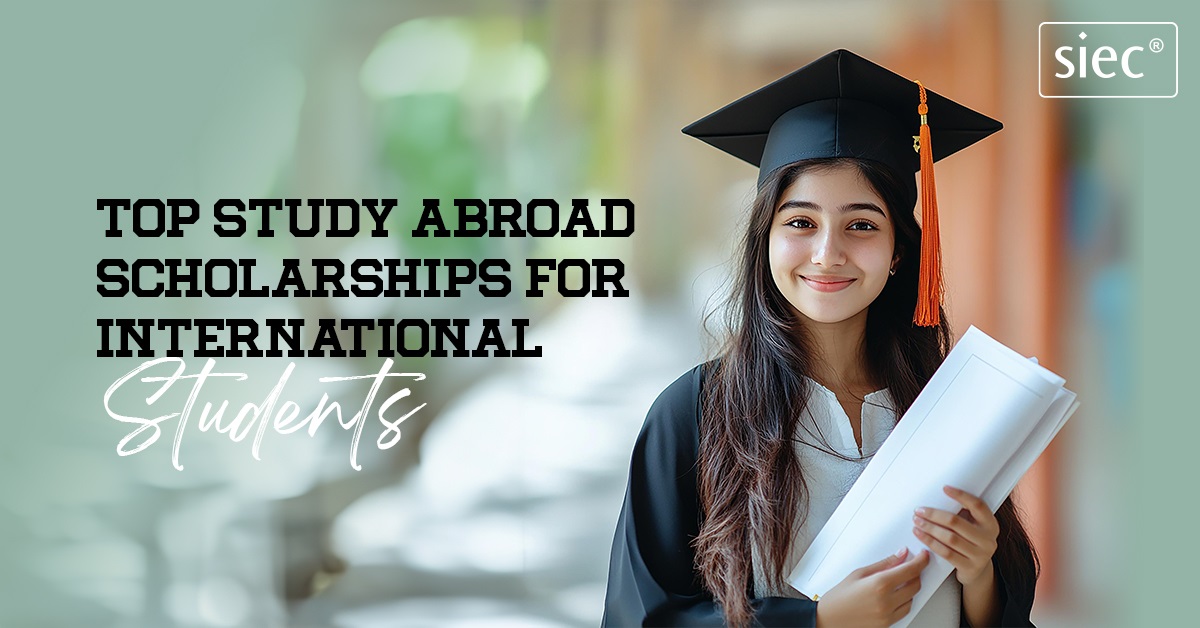
Top Study Abroad Scholarships for International Students
Discover top study abroad scholarships for international students. Explore funding options to make your global education dream affordable and achievable.
https://www.siecindia.com/blogs/top-study-abroad-scholarships-for-indian-students#StudyInUSA #HowToStudyInUSA #StudyInUSAForIndianStudents #USAStudyGuide #StudyAbroadUSA #USAStudentVisaProcess #UniversitiesInUSA #TopCollegesInUSA #CostOfStudyingInUSA #ScholarshipsToStudyInUSA #AdmissionProcessUSAUniversities #USAEducationSystem #BestCoursesToStudyInUSA #RequirementsToStudyInUSA #StudyAbroadConsultantsForUSA #USAApplicationProcessForInternationalStudents #WorkWhileStudyingInUSA #USAStudyVisaRequirements #AffordableUniversitiesInUSA #BenefitsOfStudyingInUSA
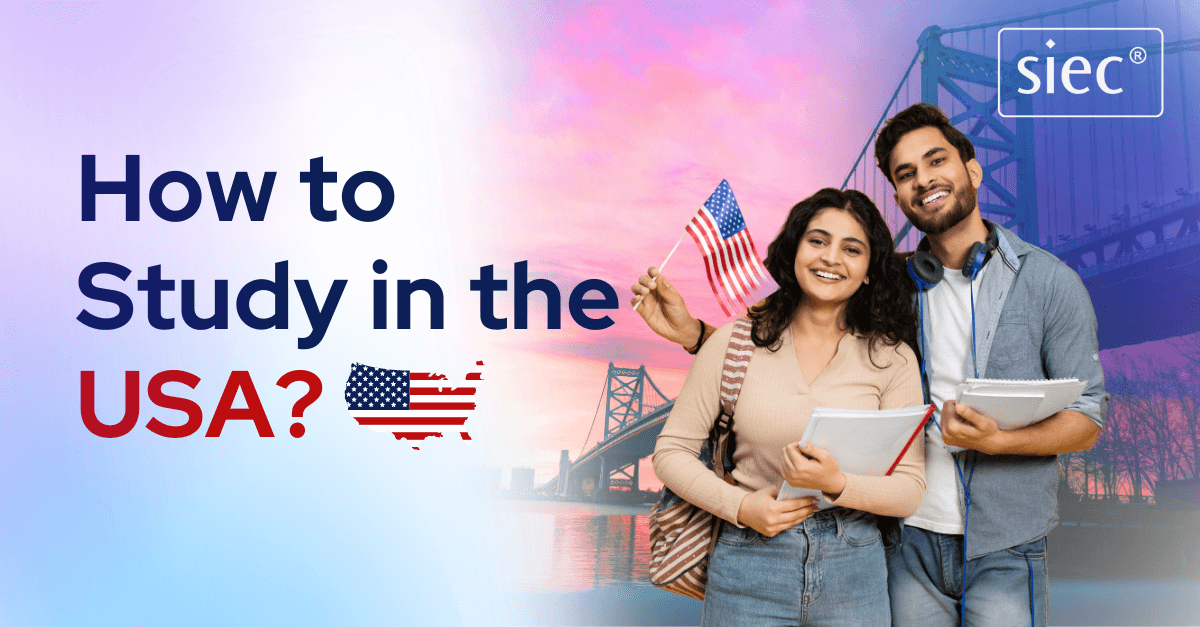
Study in the USA: Steps to Apply to Universities in the USA
Get expert guidance on how to study in the USA. Learn about admission process to study in USA and steps to study in the USA. Contact SIEC for a FREE counselling
https://www.siecindia.com/blogs/how-to-study-in-usa#StudyAbroad #StudyAbroadPrograms #StudyAbroadScholarships #BestCountriesToStudyAbroad #studyabroadconsultants #StudyAbroadForIndianStudents #StudyAbroadOpportunities #overseaseducation #InternationalEducation #StudyAbroadUniversities #StudyAbroadAdmission #StudyAbroadLoans #TopStudyAbroadDestinations #StudyAbroadAgencies #StudyAbroadRequirements #StudyAbroadCourses #StudyAbroadExams #StudyAbroadGuidance #StudyAbroadProcess #StudyAbroadVisa

Study Abroad: Top Countries, Universities & Colleges & More
Want to Study Abroad? Get Free counselling session on top study programs, universities, intakes, scholarships, visa, and application process. Register Now!
https://www.siecindia.com/study-abroad.php#StudyAbroadScholarships #ScholarshipsForStudyingAbroad #InternationalScholarships #OverseasEducationScholarships #GlobalScholarshipsForStudents #ScholarshipsForIndianStudentsAbroad #UndergraduateStudyAbroadScholarships #PostgraduateStudyAbroadScholarships #FullyFundedStudyAbroadScholarships #GovernmentScholarshipsForStudyingAbroad #PrivateScholarshipsForStudyingAbroad #BestScholarshipsToStudyAbroad #ScholarshipsForInternationalStudents #FreeScholarshipsToStudyAbroad #MBAScholarshipsAbroad #PhDScholarshipsAbroad #ScholarshipsForForeignEducation #MeritBasedStudyAbroadScholarships #NeedBasedStudyAbroadScholarships #TopStudyAbroadScholarships
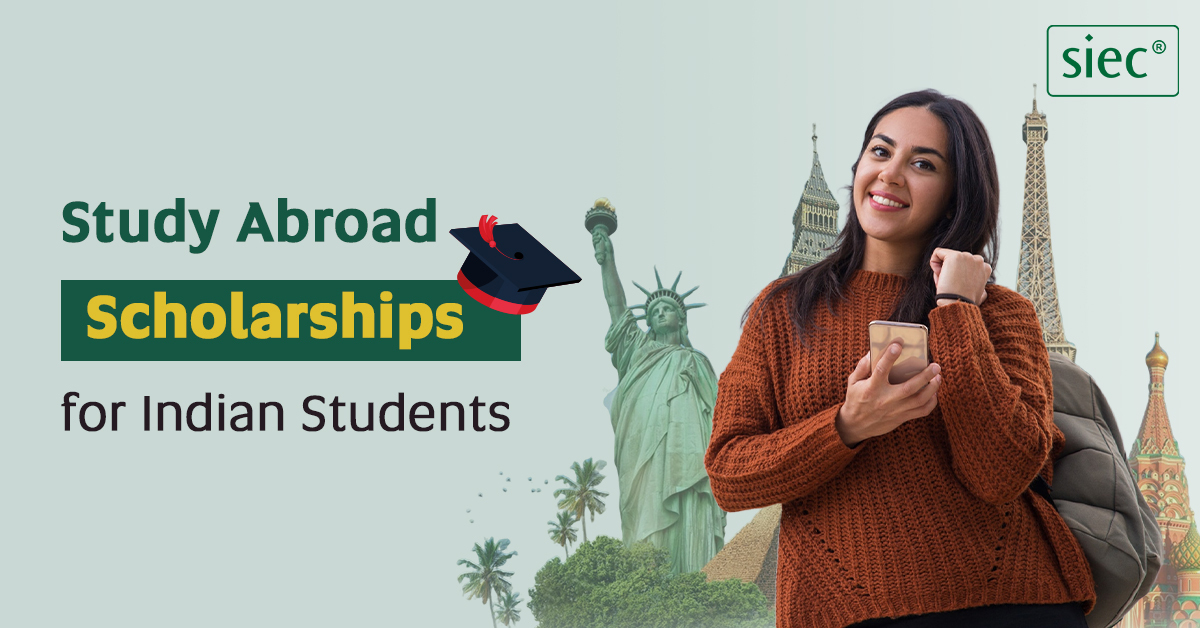
Study Abroad Scholarships for Indian Students
Explore Top Study Abroad Scholarships for Indian Students. Apply to scholarships in USA, Australia, UK, Europe and many more. Contact SIEC for more details.
https://www.siecindia.com/blogs/study-abroad-scholarships-for-indian-students#topstudyabroadconsultants #beststudyabroadconsultants #leadingstudyabroadconsultants #TopOverseasEducationConsultants #BestOverseasEducationConsultants #StudyAbroadConsultancyServices #TrustedStudyAbroadConsultants #TopEducationConsultantsForAbroad #BestConsultantsForStudyingAbroad #OverseasStudyConsultants #TopInternationalEducationConsultants #GlobalStudyAbroadConsultants #BestConsultancyForForeignEducation #TopConsultantsForAbroadStudies #ReliableStudyAbroadConsultants #BestStudyAbroadAdvisors #EducationAbroadConsultancy #TopEducationConsultantDelhi
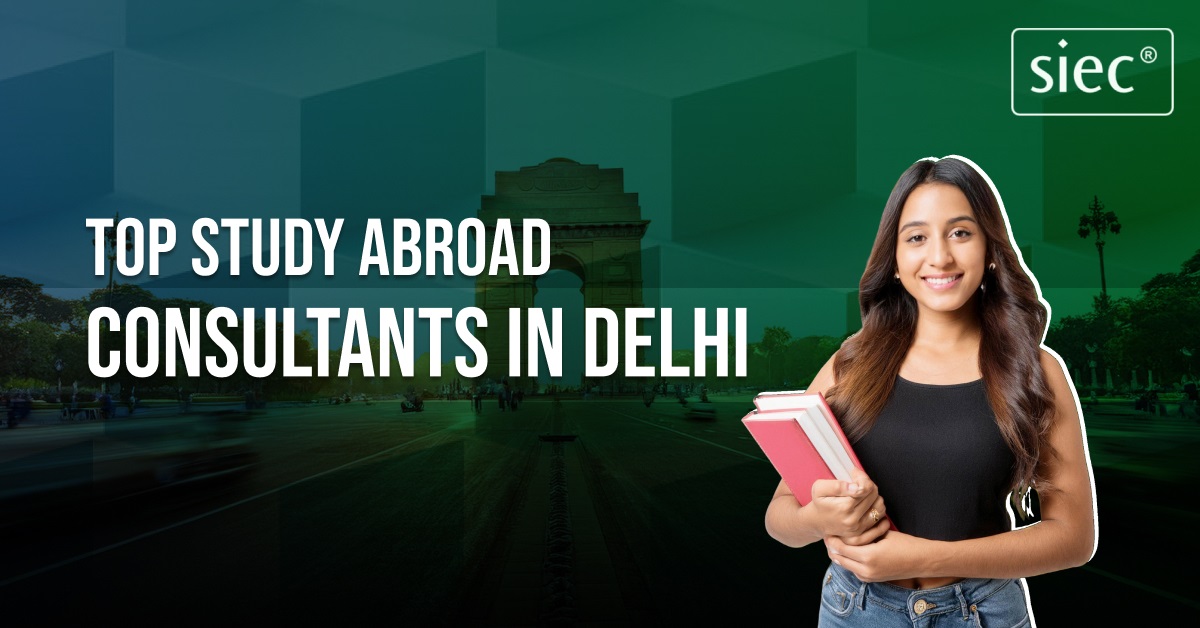
Top Study Abroad Consultants in Delhi | Expert Guidance for Global Education
Discover SIEC the top study abroad consultants in Delhi offering expert guidance, visa support, and university admissions for your global education journey.
https://www.siecindia.com/blogs/top-study-abroad-consultants-in-delhi#GeopoliticsAndStudyAbroad #ImpactOfGeopoliticsOnEducation #GeopoliticsAndInternationalStudents #StudyingAbroadAndGlobalPolitics #HowGeopoliticsAffectsStudyAbroad #BenefitsOfGeopoliticsForStudents #GeopoliticalAwarenessForInternationalStudents #GeopoliticsInHigherEducation #InternationalRelationsAndStudyAbroad #GlobalPoliticsAndStudentMobility #ImportanceOfGeopoliticsInStudyAbroad #GeopoliticalChallengesForStudentsAbroad #GeopoliticsAndCulturalExchange #GeopoliticsAndOverseasEducation #StudyAbroadGlobalPerspective
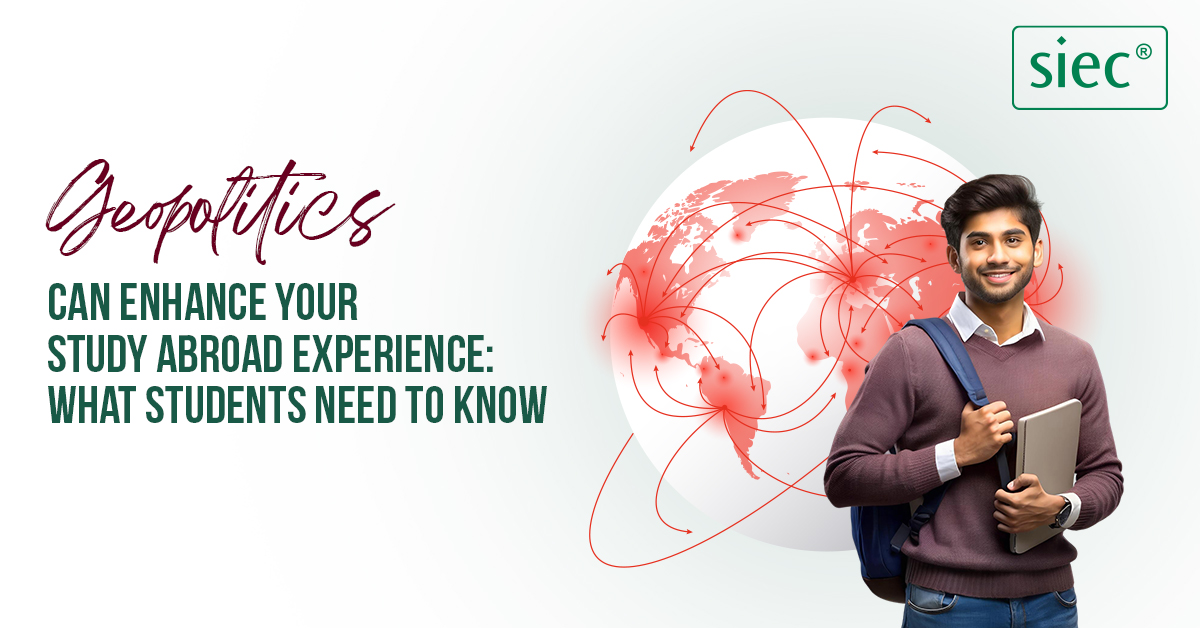
Geopolitics Can Enhance Your Study Abroad Experience: What Students Need to Know
Know How changing geopolitics influences global education and what students can learn to enhance their study abroad experience. Contact SIEC for guidance.
https://www.siecindia.com/blogs/geopolitics-can-enhance-your-study-abroad-experience#TipsToChooseUniversityAbroad #BestUniversityForInternationalStudents #ChooseRightCourseAbroad #StudyAbroadCourseSelection #FactorsToChooseUniversityAbroad #SelectingBestUniversityOverseas #ChoosingRightProgramAbroad #StudyAbroadTipsForStudents #BestCoursesToStudyAbroad #PickUniversityAbroad #StudyAbroadDecisionGuide #ChoosingCoursesAbroad #UniversitySelectionTips #FindBestUniversityAbroad #RightCareerPathAbroad #OverseasEducationGuide #ChoosingDegreeProgramAbroad #TopTipsForStudyingAbroad #UniversityAndCourseSelection

Tips to Choose the Best University and Right Courses to Study Abroad
Discover 10 Tips to Choose the Best University and Right Courses to Study Abroad. Contact SIEC for FREE guidance on finding the right university and best course.
https://www.siecindia.com/blogs/tips-to-choose-the-best-university-and-right-courses-to-study-abroadWhat role should traditional medicine play in Nigeria's health system?
Traditional medicine (TM), often referred to as "African Traditional Medicine" (ATM) or "Alternative Medicine" (though the latter term can be broader), plays an incredibly significant, and often indispensable, role in Nigeria's health system, particularly given the challenges facing conventional Western medicine.
Over 70-80% of Nigerians, especially those in rural and low-income communities, rely on traditional medicine for their primary healthcare needs.
The role of traditional medicine should ideally be one of integration, regulation, and research, leveraging its strengths while mitigating its risks, to complement and enhance the formal healthcare system.
Here's a breakdown of its current and potential roles:
I. Current De Facto Role (Filling the Gaps):
Primary Healthcare Provider for the Underserved: In many rural areas where modern healthcare facilities are scarce or non-existent, traditional healers are often the only accessible and affordable source of healthcare. They serve as the first point of contact for a vast majority of the population.
Affordability and Accessibility: Traditional remedies and consultations are often cheaper than orthodox medicine, and payment in kind (e.g., farm produce) can be acceptable. Traditional practitioners are typically located within communities, making them highly accessible.
Cultural and Spiritual Resonance: Traditional medicine often takes a holistic approach, addressing not just physical ailments but also spiritual, psychological, and social dimensions of health. This resonates deeply with the cultural beliefs and worldview of many Nigerians regarding disease causation and healing.
Treatment of Specific Ailments: Traditional medicine has long been relied upon for managing certain conditions, such as:
Bone setting: Traditional bone setters (TBS) are popular for treating fractures and dislocations.
Mental health: Traditional healers often deal with mental illnesses, which are frequently attributed to spiritual causes in many Nigerian cultures.
Obstetrics and Gynecology: Traditional birth attendants (TBAs) play a significant role in maternal care, particularly in rural settings.
Herbal Remedies: A vast array of medicinal plants are used to treat common ailments like malaria, fever, skin infections, and digestive issues.
Source of New Drug Discovery: Many modern pharmaceutical drugs have their origins in traditional plant-based remedies (e.g., quinine from cinchona bark for malaria, artemisinin from Artemisia annua).
II. The Ideal and Future Role (Integration, Regulation, and Research):
Integration into Primary Healthcare:
Referral System: Traditional practitioners can be trained to recognize conditions beyond their scope and refer patients to modern health facilities. Conversely, orthodox doctors should be educated about common traditional practices to facilitate communication and understanding with patients.
Collaborative Care: For certain conditions, a collaborative approach could be beneficial, where traditional and modern practitioners work together, especially in areas like mental health, rehabilitation, and chronic disease management.
Community Health Workers: Traditional healers, with their deep community trust, could be integrated into community health worker networks for health promotion, disease prevention, and surveillance.
Standardization and Regulation:
National Policy and Legal Framework: Develop clear national policies and legal frameworks for the practice of traditional medicine, defining roles, responsibilities, and standards.
Registration and Licensing: Establish a robust system for the registration, licensing, and certification of traditional medicine practitioners (TMPs) to ensure they meet minimum standards of training and ethics.
Quality Control of Herbal Products: Implement strict regulations for the cultivation, harvesting, processing, packaging, labeling, and marketing of herbal remedies. NAFDAC (National Agency for Food and Drug Administration and Control) has a role here in ensuring safety, quality, and efficacy.
Code of Ethics: Develop and enforce a code of conduct and ethics for TMPs to curb quackery, exploitation, and harmful practices.
Scientific Research and Validation:
Efficacy and Safety Studies: Conduct rigorous scientific research, clinical trials, and toxicological studies on widely used traditional remedies to ascertain their efficacy, safety, active compounds, dosages, and potential side effects or drug interactions.
Preservation of Knowledge: Document and archive traditional medicinal knowledge (which is often oral and localized) to prevent its loss and facilitate scientific study. This also raises issues of intellectual property rights for traditional knowledge holders.
Drug Discovery: Invest in pharmaceutical research and development to identify new drug candidates from Nigeria's rich biodiversity, collaborating with traditional healers.
Education and Training:
Formal Training for TMPs: Develop formal training programs for TMPs that combine traditional knowledge with basic modern medical concepts (e.g., anatomy, physiology, hygiene, first aid, record-keeping, referral protocols).
Cross-Cultural Education: Incorporate elements of traditional medicine into the curriculum of modern medical and nursing schools to foster understanding, respect, and potential collaboration.
Public Education: Educate the public on the importance of seeking validated and regulated traditional medicines, and the dangers of harmful practices or unproven remedies.
III. Challenges to Integration:
Lack of Standardization: The diverse, often secretive, and undocumented nature of TM practices.
Safety and Efficacy Concerns: Issues with dosage, purity, potential toxicity, and lack of scientific evidence for many traditional remedies.
Quackery: The prevalence of charlatans and untrained individuals who exploit public trust.
Professional Skepticism: Resistance and distrust from some orthodox medical practitioners towards TM.
Spiritual vs. Scientific Divide: The challenge of reconciling spiritual and cultural aspects of TM with the scientific, evidence-based approach of modern medicine.
Despite these challenges, ignoring traditional medicine in Nigeria is not an option. Its widespread use and cultural significance necessitate its proper integration into the national healthcare system, ensuring safety, efficacy, and ultimately, better health outcomes for all Nigerians.
Is the appointment of Stephen Andrew Feinberg, an American businessman and investor, as the 36th United States deputy secretary of defense by President Donald Trump, the prime reason for Australia considering terminating the Chinese-owned company Landbridge‘s 99-year lease for the strategically important Darwin port?
“Not exactly” could be the answer, though Feinberg’s private equity group Cerberus (he is the founder and co-CEO, but had to resign from the post for joining the Pentagon) is reported to be one of the bidders, along with the Japanese logistics company Toll Group, to buy back the lease from Landbridge.
If done, it will be on the pattern of Hong Kong-based CK Hutchison’s proposed sale of Panama Canal ports to Swiss-Italian Mediterranean Shipping Co and BlackRock, following pressure from the Trump Administration over alleged Chinese influence at the vital waterway.
There is also the possibility of Australia not leasing the port to any other country after taking it back from the Landbridge, based on recent statements by Australian politicians. The country will manage the port itself.
Landbridge’s lease has been a controversial issue in Australian politics ever since it was signed on November 15, 2015.
In fact, the debate surrounding the port predates the Trump Presidency. The lease was opposed by even President Barack Obama. But the then Liberal government led by Prime Minister Malcolm Turnbull gave the go-ahead for the lease. The Labor Party, then in opposition, had opposed the move.
Now in power, Labor has not changed its position, with Prime Minister Anthony Albanes, who got reelected in May this year, asserting during his election-campaign, “ “Obviously we live in an uncertain world at the moment, the idea that you would have the major port in northern Australia owned by any foreign interest is not in Australia’s national interest”.
The Liberals, now in opposition, have also changed their position. They are now against the lease. Thus, there is now a more or less political consensus in Australia against the Darwin port remaining in Chinese hands.
It may be noted that Darwin Port, located in Australia’s Northern Territories (NT), was leased for $506 million by the Landbridge, which is controlled by Chinese billionaire Ye Cheng, who was a member of the national committee of the Chinese People’s Political Consultative Conference, a political advisory body, from 2013 to 2018.
The Labor Party, then, had alleged that Landbridge had “extensive connections” to the Chinese Communist Party and People’s Liberation Army, warning that the lease “compromised Australia’s long-term strategic security”.
However, it is also noteworthy that Australia’s Defence Department had in 2015 reviewed the strategic and operational risks of the deal, including cyberattacks, intellectual property theft, infrastructure degradation, and port shutdowns, and okayed it. Likewise, the Australian Security Intelligence Organisation (ASIO) was equally satisfied with the level of due diligence conducted before the lease was approved.
Reconsideration Of The Lease
So, why is security a factor now in the demands behind the reconsideration of the lease?
It is because the geopolitical considerations in 2015 of the Australian security elites have changed. The optimistic perception of China in Australia in 2014 seems to be no longer there today, thanks to Beijing’s increasing assertiveness in the Indo-Pacific region in recent years.
After all, so runs the argument, every civilian Chinese farm, state-owned or not, and the Landbridge being no exception, has to comply with the ruling Communist Party’s mandates on matters relating to national security. Businesses do constitute a geopolitical cudgel for Beijing.
And that being the case, Darwin’s strategic location is significant as it is Australia’s northernmost maritime facility, situated on the edge of Southeast Asia and the South China Sea.
Maritime forces stationed there can always enjoy a central position just outside the southerly arc of Asia’s first island chain, which runs from Japan through Taiwan, the Philippines, and the Indonesian archipelago before terminating at the Strait of Malacca.
The Sunda and Lombok straits, key alternatives to the Malacca Strait, are within Darwin’s reach. Amid China’s growing assertiveness in the South China Sea, U.S. Marine forces, allies of Australia, have direct access from Darwin, with approximately 2,500 Marines from the I Marine Expeditionary Force rotating through the port annually.
Among other functions, these Marines are also said to be honing tactics for “access denial” while helping beleaguered allies and partners like the Philippines and Taiwan.
In other words, with Darwin occupying such a strategic position, it is argued that Australia and its allies cannot afford to leave the port in Chinese hands.
As James Holmes of the U.S. Naval War College fears, Chinese observers at the port could gather intelligence on the Australian Defense Force and allied comings and goings while abetting net assessment of allied capabilities, tactics, techniques, and procedures.
“In so doing, they help acquaint the People’s Liberation Army (PLA) with potential foes, the first step toward defeating them. Nor is it far-fetched to imagine Chinese port operators slow-rolling—or, more likely, actively hampering—allied military movements and resupply in wartime”.
All these apprehensions, when fitted in the overall framework of China outpacing the developed Western countries in general and the United States in particular in investing in “the port infrastructure around the world”, have further sharpened the geopolitical focus on Darwin.
Incidentally, as per the latest available data, China operates or has ownership in at least one port on every continent except Antarctica. Of the 129 projects, 115 are active, whereas the remaining 14 port projects have become inactive due to cancellation or suspension over environmental concerns, souring of political relations, financial problems, and security issues raised domestically and internationally.
It is said that China has ownership of 91 active port projects across the globe, where military use is a possibility, providing it with a foothold on every continent except Antarctica.
These projects are part of its Maritime Silk Road (MSR). If the American military analysts are to be believed, China’s position of control and influence over the majority of port infrastructure globally poses a significant economic and military security threat to the United States and its allies.
It is feared that China could always use its power to interfere with operations that rely on port access—including military and economic operations that are vital to American interests and those of its allies and partners.
In fact, according to a study, out of the 70 commercial port projects that China has in the “Global South,” which includes Australia, an estimated 55 projects have the potential for naval use as well.
In addition to commercial and military use, China is believed to be using port infrastructure for spying and intelligence gathering. Apparently, a U.S. Congressional probe in 2024 showed communications equipment in Chinese-made cranes at U.S. ports, suggesting vulnerabilities to supply chains, trade data, and other sensitive information.
It is also said that China has secured a commanding position through Logink (also known as the National Transportation and Logistics Public Information Platform), a Chinese state-owned digital logistics platform.
At least 24 ports worldwide reportedly have adopted the Logink system, which could allow China to access significant amounts of confidential information related to transportation, pricing, and management of goods (including military equipment), threatening its rivals’ security.
Given all this, the United States would obviously like Prime Minister Anthony Albanese to keep up his election promise of taking back Darwin from the Chinese hands. But then, it is easier said than done.
Albanese had avoided giving a definite answer when questioned on this during his six-day trip to China, one of Australia’s “strategic partners”, last month.
In any case, China is speaking out vehemently opposing the termination of the lease, terming the move as “ethically questionable.”
Chinese Premier Li Qiang has called for his country’s companies to be treated properly, saying, “We hope that the Australian side can provide a fair, open, and non-discriminatory business environment for Chinese enterprises in Australia”.
But the point is that gone are the days when China was seen in Australia as a benign trade partner. China’s lease of the port is no longer an issue limited to trade; it has become the battleground over Beijing’s overall geopolitical ambitions, something Australia’s ally, the United States, is trying to keep limited.
#topstudyabroadconsultantsindelhi #BestOverseasEducationConsultantsInDelhi #StudyAbroadConsultantsDelhi #Top10StudyAbroadConsultantsInDelhi #OverseasEducationConsultantsDelhi #StudyVisaConsultantsInDelhi #EducationConsultantsForAbroadStudiesInDelhi #BestConsultancyForStudyAbroadInDelhi #ForeignEducationConsultantsInDelhi #TopConsultantsForStudyingAbroadDelhi #StudyAbroadAgenciesInDelhi #DelhiStudyAbroadExperts #AbroadConsultancyInDelhi #InternationalEducationConsultantsInDelhi #TopRatedStudyAbroadConsultantsDelhi
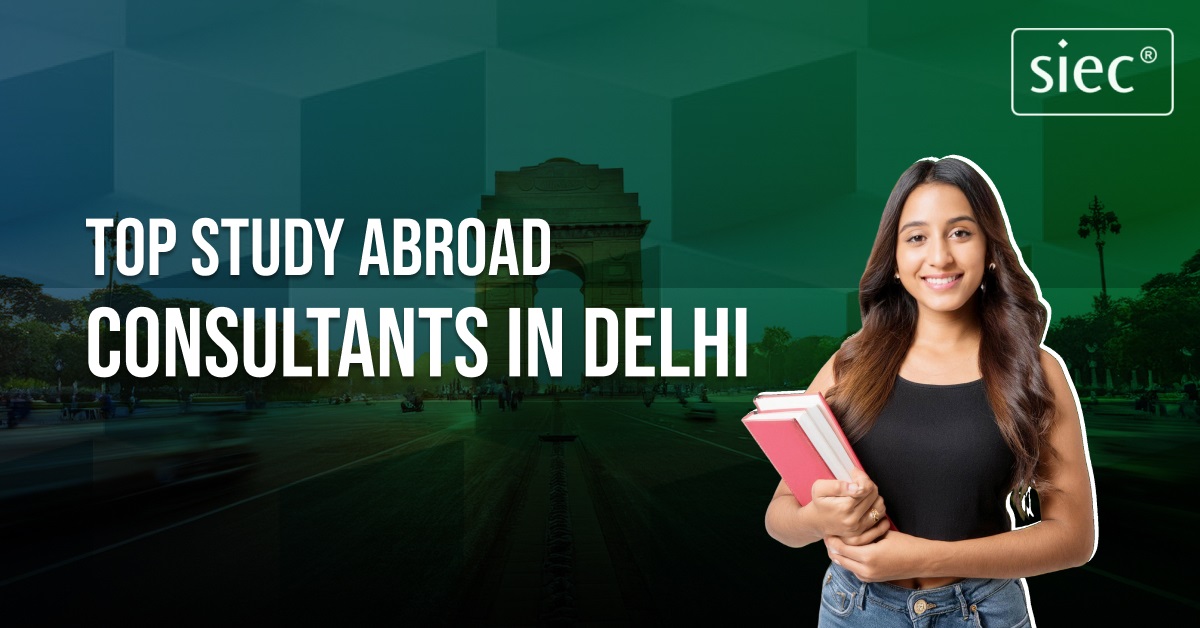
Top Study Abroad Consultants in Delhi | Expert Guidance for Global Education
Discover SIEC the top study abroad consultants in Delhi offering expert guidance, visa support, and university admissions for your global education journey.
https://www.siecindia.com/blogs/top-study-abroad-consultants-in-delhi#TopStudyAbroadExperts #BestOverseasEducationConsultants #leadingstudyabroadconsultants #TopEducationConsultantsForAbroad #ExpertOverseasEducationAdvisors #TopRatedStudyAbroadConsultants #BestStudyAbroadCounsellors #GlobalEducationConsultants #ProfessionalStudyAbroadAdvisors #TopForeignEducationConsultants #InternationalEducationExperts #OverseasAdmissionConsultants #TopStudentVisaConsultants #StudyAbroadCareerExperts #ExpertGuidanceForStudyingAbroad #BestGlobalStudyAdvisors #ExperiencedStudyAbroadCounsellors #LeadingInternationalEducationConsultants #ExpertAbroadEducationServices #TrustedOverseasStudyConsultants
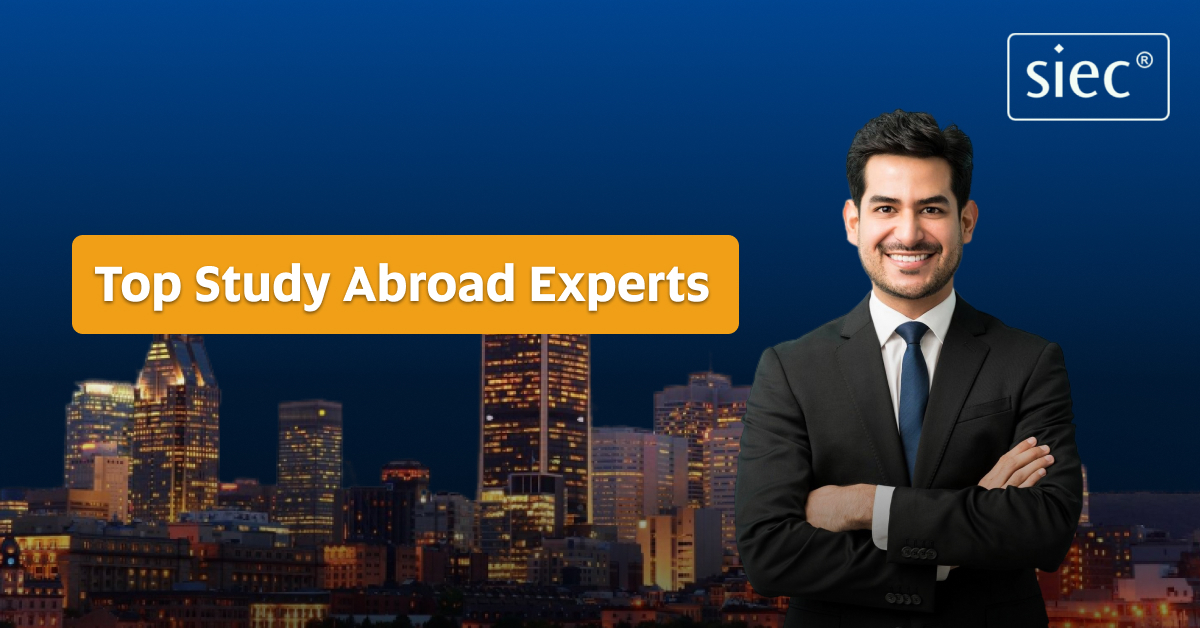
Top Study Abroad Experts: Apply for 2025 Intakes
Explore SIEC the top study abroad experts offering personalized guidance, university selection, visa support, and career advice to help you study overseas successfully.
https://www.siecindia.com/blogs/top-study-abroad-experts#topstudyabroadconsultantsindelhi #BestOverseasEducationConsultantsDelhi #DelhiStudyAbroadConsultants #TopEducationConsultantsInDelhi #AbroadEducationConsultantsInDelhi #Top10StudyAbroadConsultantsDelhi #BestStudyVisaConsultantsInDelhi #OverseasStudyConsultantsDelhi #ForeignEducationConsultantsInDelhi #TrustedStudyAbroadConsultantsDelhi #StudyAbroadCounsellingDelhi #InternationalEducationConsultantsDelhi #TopConsultantsForStudyingAbroadDelhi #DelhiOverseasConsultancy #ReputedStudyAbroadConsultantsInDelhi
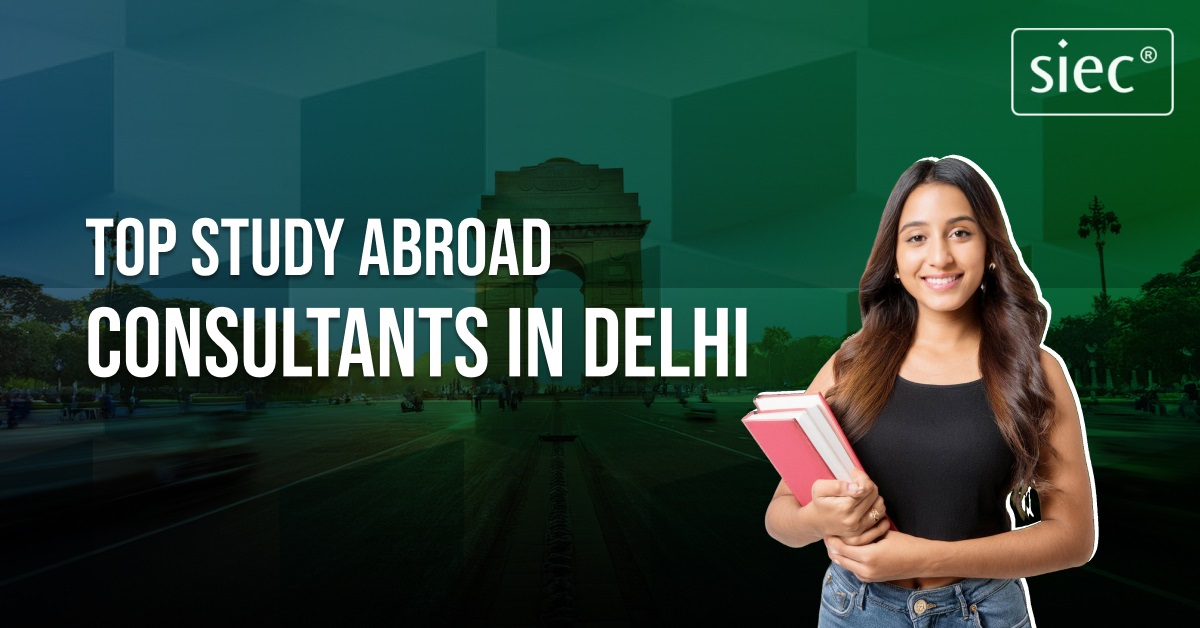
Top Study Abroad Consultants in Delhi | Expert Guidance for Global Education
Discover SIEC the top study abroad consultants in Delhi offering expert guidance, visa support, and university admissions for your global education journey.
https://www.siecindia.com/blogs/top-study-abroad-consultants-in-delhi#StudyInItaly #ItalyStudyVisa #ItalianUniversities #StudyAbroadItaly #StudyInItalyCost #ItalyScholarships #BestCoursesItaly #StudyInItalyWithoutIELTS #StudyInItalyAfter12th #MBAinItaly #MastersInItaly #TopItalianUniversities #ItalyAdmissionProcess #StudyAndWorkInItaly #IndianStudentsInItaly #ItalyVisaRequirements #UndergraduateInItaly #PostgraduateInItaly #AffordableItalianUniversities #EducationInItaly
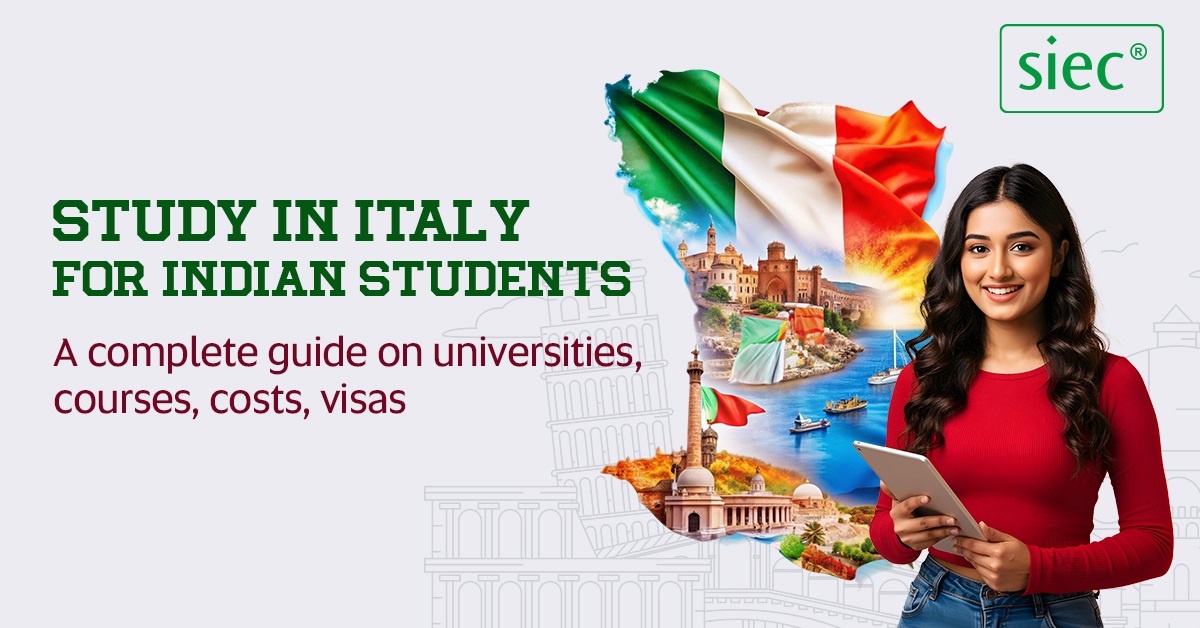
Study in Italy for Indian Students | Cost, Visas, Courses
Explore complete guide to study in Italy, best Italian universities. Living costs, visa guide, and how to apply to Study in Italy step by step. Apply now!
https://www.siecindia.com/blogs/study-in-italy-for-indian-students#PopularCoursesInSingapore #BestCoursesInSingapore #TopCoursesSingapore #StudyBusinessSingapore #EngineeringCoursesSingapore #ITCoursesSingapore #HospitalityCoursesSingapore #DesignCoursesSingapore #DataScienceSingapore #MBASingapore #FinanceCoursesSingapore #BiotechnologySingapore #HealthcareCoursesSingapore #TourismCoursesSingapore #LawCoursesSingapore #AccountingCoursesSingapore #MarketingCoursesSingapore #AnimationCoursesSingapore #SupplyChainSingapore #PsychologyCoursesSingapore
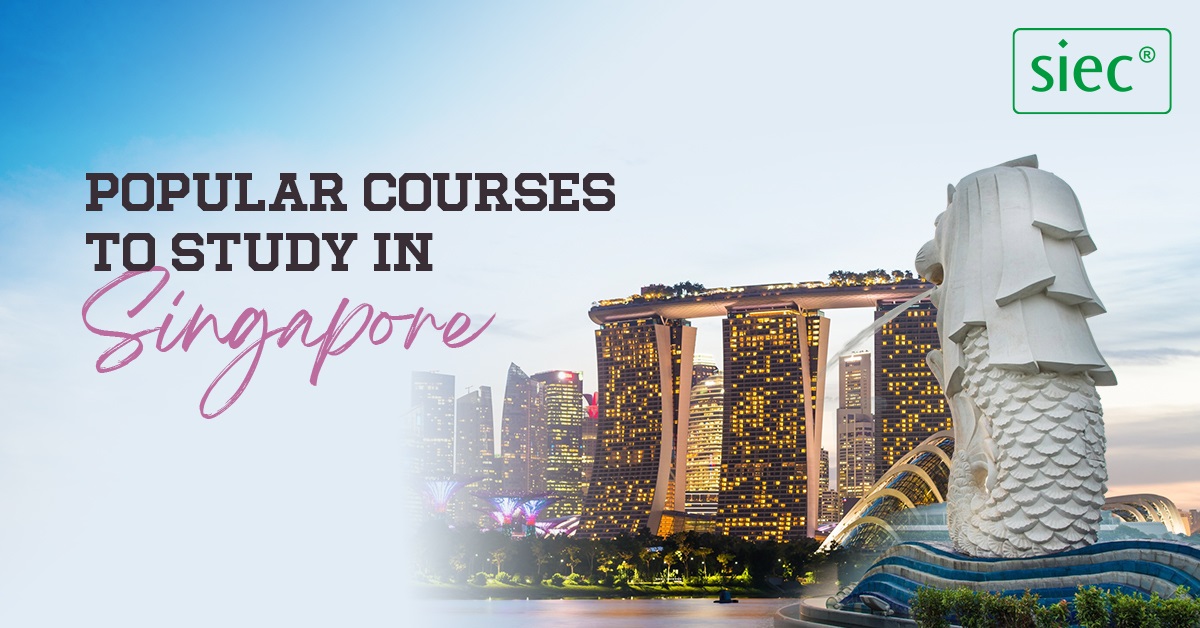
Popular courses to study in Singapore | Best Universities 2025
If you are planning to study in Singapore, then explore Popular courses to study in Singapore, best courses offered by universities in Singapore. Contact SIEC Today.
https://www.siecindia.com/blogs/popular-courses-to-study-in-singapore"I was entirely unsurprised, which is a sad commentary, but it speaks to the Chinese Communist Party, the CCP wants to kill Americans," Michael Sobolik, a senior fellow at the Hudson Institute focusing on U.S. and China relations, told Fox News Digital after FBI Director Kash Patel announced the arrests of the two Chinese nationals.
"Look at what they've done with smuggling fentanyl precursors into our country to kill Americans, look at the effects of them failing to stop the spread of COVID-19," Sobolik said. "Dead Americans. The fact that they want to target Americans here within the United States with pathogens and with bioweapons. This is the Chinese Communist Party. This is what they do. They're in a cold war with the United States. They want to become the most powerful nation in the world and they wanna make the world safe for their tyranny and unsafe for freedom. And they're coming for us here at home."
The couple are accused of smuggling a fungus called Fusarium graminearum, which scientific literature classifies as a "potential agroterrorism weapon," according to the Justice Department. Federal prosecutors note that the noxious fungus causes "head blight," a disease of wheat, barley, maize and rice, and "is responsible for billions of dollars in economic losses worldwide each year."
The Justice Department also says Fusarium graminearum’s toxins cause vomiting, liver damage and "reproductive defects in humans and livestock."
According to the criminal complaint, one of the accused allegedly received Chinese government funding for her work on the pathogen in China.
The couple are accused of bringing the pathogen into the U.S. to study at a University of Michigan laboratory, which raises more concerns about Chinese nationals infiltrating American universities.
Last month, a bombshell report out of Stanford University shed light on the influence of spies from the Chinese Communist Party that the student newspaper says have likely infiltrated the prestigious institution and other universities nationwide to gather intelligence.
The Trump administration is targeting Harvard's international student program, attempting to revoke student visas for Chinese nationals, and initiating deportation proceedings for students who participate in pro-Palestinian protests. So we took a look at where foreign college students in the United States are based. Here's what we found:
The latest data available from Immigration and Customs Enforcement is from 2023 — it gives details of people receiving an F-1 visa, which is the most common type for international students, scholars, and trainees. While private schools such as Harvard do receive large numbers of students, so do major public universities.
How many international students are at U.S. colleges?
As many as 1.5 million international students were in the United States in 2023 using F-1 or M-1 visas, based on a count of records in a system managed by the Department of Homeland Security. Just under 1.4 million of those were seeking degrees in 2022, and there could be duplicates due to people seeking more than one degree at the same time.
A big portion of these international students were not enrolled that year, but instead participated in post-graduate training programs. For example, Columbia University wrote in its 2023 annual report that it had just under 14,000 enrolled international students, plus about 6,500 students in training programs, and about 3,000 scholars.
Of the universities granting the most F-1 visas, the top 500 had more than 1.2 million international students combined, according to USA TODAY's analysis. This is the type of visa required to enroll in a degree program, including associates degrees, bachelor's degrees, masters degrees, and doctorates. The vast majority are pursuing bachelor's and masters degrees, according to the Department of Homeland Security. Foreign nationals can also receive F-1 visas to work in their field of study for up to three years, according to U.S. Citizenship and Immigration Services.
Which college has the most international students?
The college campus with the most international students that year was New York University, with nearly 25,000 F-1 visas issued at its main campus, and about 7,500 issued at its Brooklyn campus. Other campuses with high international populations were in other major cities — Northeastern University (Boston), Columbia University (New York), and the University of Southern California (Los Angeles).
Which public schools have the highest number of foreign student visas?
Arizona State University had nearly 18,000 international students in 2023, the data shows, placing it fifth on the list. Other public universities with major international student populations were the University of Illinois, Urbana-Champaign; the University of North Texas, and Purdue University in Indiana.
How many international students are at Harvard?
In 2023, Harvard did not rank in the top 20 of U.S. colleges for foreign students, according to the data. The university ranked No. 21 nationwide, and third in the Boston area, behind Northeastern University and Boston University. The school had about 9,700 F-1 visa students in 2023, according to the data.
The Trump administration on May 22 attempted to rescind Harvard's participation in the Student and Exchange Visitor Program, which certifies schools to allow them to enroll international students, including F-1 visa holders. The administration eased up a week later and introduced a process to allow Harvard to argue that it should be able to use the program.
Syria’s interim President Ahmed al-Sharaa has, in six months, established himself internationally and had crippling sanctions removed, but still needs to rebuild national institutions, revive the economy, and unite the fractured country.
What are the main challenges facing Sharaa, whose Islamist-led coalition toppled longtime Syrian ruler Bashar al-Assad on December 8?
State Building
After ousting Assad, Sharaa has had to navigate four political entities, each with its own civil, economic, judicial, and military organisation: the central government in Damascus, the incumbent president’s former rebel authority in the northwest, Turkey-backed groups in the north, and a Kurdish-led autonomous administration in the northeast.
Radwan Ziadeh, executive director of the Washington-based Syrian Center for Political and Strategic Studies, said that creating relative stability in this fragile context was “a significant accomplishment” for Sharaa.
But guaranteeing the success of the five-year transitional phase will be “the most difficult challenge”, Ziadeh said.
The new authorities’ ability to maintain stability was cast into doubt when deadly sectarian clashes hit the Syrian coast in March and the Damascus area the following month.
More than 1,700 people were killed in the coastal violence, mostly members of the Alawite minority to which Assad belongs, according to the Syrian Observatory for Human Rights monitor. The clashes near Damascus involved the Druze minority.
The treatment of minorities remains “one of the greatest internal challenges”, Ziadeh said, as “building trust between different components requires great political effort to ensure coexistence and national unity”.
Badran Ciya Kurd, a senior official in the Kurdish-led administration in the northeast, which seeks a decentralised Syrian state, warned against “security and military solutions” to political issues.
The transitional government should “become more open to accepting Syrian components… and involving them in the political process”, Kurd told AFP, calling for an inclusive constitution that would form the basis for a democratic system.
US Secretary of State Marco Rubio warned last month that Syrian authorities could be weeks away from a “full-scale civil war” due to the acute challenges they faced.
Sharaa’s “greatest challenge is charting a path forward that all Syrians want to be part of, and doing so quickly enough without being reckless”, said Neil Quilliam, associate fellow at the Chatham House think tank.
Security
There are pressing security challenges, with kidnappings, arrests, and killings sometimes blamed on government-linked factions reported by the Syrian Observatory and on social media.
The recent bouts of sectarian violence have raised concerns over Sharaa’s ability to keep radical fighters among his forces’ ranks in check.
Washington wants foreign jihadists to leave the country, but Sharaa may find it difficult to let go of fighters who stood by his side for years, and some countries refuse to take them back.
Six foreign fighters have been promoted in the new defence ministry, sparking international criticism. A Syrian source with knowledge of the matter said, however, that Damascus had told the United States it would freeze the promotions.
Washington also wants the Syrian government to take control of Kurdish-run prisons and camps where thousands of suspected Islamic State group jihadists and their relatives are detained, but Damascus lacks the personnel to manage them.
Economy, Diplomacy
Sharaa is leading a country battered by 14 years of civil war, with its economy depleted, infrastructure destroyed, and most people living in poverty.
Under the new authorities, Syria has seen an increased availability of fuel and goods, including certain fruits whose import had previously been nearly impossible.
After Western governments lifted many sanctions, Sharaa’s priority now is fighting poverty in order to “stabilise the country and avoid problems”, according to a source close to the president.
Economist Karam Shaar said that beyond political stability, which is essential for economic growth, other obstacles include “the regulatory framework and the set of laws necessary for investment, which unfortunately seem vague in many parts”.
Authorities have stated that they are studying legislation that could facilitate investments while seeking to attract foreign capital.
Rehabilitating Syria’s infrastructure is key to encouraging millions of refugees to return home, a major demand from neighbouring countries and others in Europe.
Syria must also contend with neighbouring Israel, which has carried out attacks and incursions since December.
According to Quilliam, Damascus is “light years away from considering normalisation” with Israel — a prospect pushed by Washington, after several other Arab states have done so in recent years.
Syria has admitted it held indirect talks with Israel, but the government has avoided taking a stance on normalisation.
Even before Donald Trump’s ambitious $175 billion missile defense system – the Golden Dome – could materialise, China’s new technology is gearing up to punch holes in it.
China has developed a new material to enhance the stealth of its aircraft and missiles, enabling them to evade microwave and infrared detection technologies used for surveillance.
The much-hyped Golden Dome system is touted to be a multi-domain shield that will be built to keep the US safe against aerial threats from adversaries like China, Russia, Iran, and North Korea.
President Trump has described the system as a “transformative leap” in national defence, combining land, sea, and space-based technology to intercept missiles, drones, and potentially even space-launched weapons.
“Golden Dome will protect our homeland,” Trump said from the Oval Office. “Once fully constructed, Golden Dome will be capable of intercepting missiles even if they are launched from other sides of the world and even if they are launched from space.”
According to the 2025 Threat Assessment by the US Intelligence Community, “The PLA has the capability to conduct long-range precision strikes with conventional weapons against the Homeland’s periphery in the Western Pacific, including Guam, Hawaii, and Alaska. China has developed a range of ballistic and cruise missiles with conventional payloads that can be delivered from its mainland as well as by air and sea, including by nuclear-powered submarines. China may be exploring development of conventionally-armed intercontinental range missile systems, which, if developed and fielded, would allow China to threaten conventional strikes against targets in the continental United States.”
The ‘Golden Dome’ is expected to be America’s satellite-based shield against the growing intercontinental ballistic missile arsenal of China and Russia. Both countries with adversarial ties to the US have also been working on hypersonic missiles. Beijing had earlier expressed grave concern about the project.
Now, the development of new materials that can help China’s long-range missiles evade detection could be detrimental to the effectiveness of the American missile defense shield.
Stealth coating works by reducing the radar cross-section of a particular aircraft or missile, making it harder to detect. Aircraft and missiles emit strong thermal radiation, specially created by superheated components such as exhaust nozzles, which raises the risk of detection.
Over time, high temperatures degrade or destroy the structure of standard materials. However, the new material is claimed to be engineered to withstand extreme temperatures, making it highly suitable for high-speed military platforms, such as missiles and hypersonic aircraft.
According to a report by the South China Morning Post, a Chinese research team led by Professor Li Qiang of Zhejiang University has found a solution to the problem.
A study published in March reveals that the team has developed a material capable of evading both microwave and infrared detection technologies, even when exposed to extremely high temperatures. The microwave and infrared detection are commonly used in military surveillance.
This new ‘meta surface’ claims to resolve the longstanding issue vis-à-vis stealth coatings – instability at high temperatures. When subjected to high temperatures produced by engine exhaust or aerodynamic friction, many stealth materials lose their structural integrity or become less effective. This new material, on the other hand, continues to function at temperatures as high as 700°C.
The material exhibits multispectral properties under laboratory conditions. It lowers radiation fingerprints in a wide range of wavelengths, including microwave frequencies and the short-wave (SWIR), mid-wave (MWIR), and long-wave infrared bands.
In comparison to established blackbody radiation standards, lab testing showed a significant decrease in thermal emissions: radiation intensity decreased by 37.2% in the SWIR band and by 63.6% in the MWIR range at peak heat.
The material has a layered structure, including a specialised “meta-surface” – which is a precisely engineered layer patterned to control how radar and infrared waves interact with it.
The top layer is designed to be moisture resistant, whereas the bottom layer ensures its adherence to the surface. Laser etching throughout the structure allows radar signals to pass through without compromising its heat-hiding abilities.
Blinding The Radars
Since the advent of radar, military aircraft designers have worked towards masking their planes to avoid detection.
Over time, a combination of technologies has been employed, including radar-reflecting shapes and radar-absorbing materials. The leading military powers are continually working to improve their stealth aircraft technology.
Presently, the American B-2 stealth bomber, F-22 Raptors, and F-35 Lightning II are covered in various radar-absorbing polymers and designed to reflect radar energy away from detectors.
They absorb 70 percent to 80 percent of the energy from tracking radar. This makes it difficult to differentiate the aircraft from birds and other smaller airborne objects.
These Radar Absorbing Materials (RAMs) have two major shortcomings – they can be easily damaged due to exposure to salt and moisture. And, secondly, most advanced, stealthy polymers degrade at temperatures above 250 Celsius, a heat level very common around aircraft engines.
China has also been investing in stealth technologies and experimenting with new ideas. Earlier this year, it was reported that Chinese researchers have adapted the 3,000-year-old Jacquard weaving technique to resolve the issue of stealth coating degradation.
The Chinese researchers found that integrating conductive yarns into a warp-knitted “double-sided jacquard” structure enabled the new material to absorb 90.6% of radar waves in the 8-26GHz spectrum, outperforming conventional coatings.
According to the team led by Professor Jiang Qian, the material is a “marriage of ancient patterning and modern electromagnetism.”
Even the F-22’s RAM is not immune to extreme weather conditions. According to USAF’s data, it spends over $60,000 per flight hour and requires RAM reapplication every three weeks, resulting in high costs and frequent maintenance downtime.
In comparison, the article claims, China’s jacquard-woven stealth material extends service life to 18 months, reducing costs by 75 percent.
China blasted the U.S. on Monday over moves it alleged harmed Chinese interests, including issuing AI chip export control guidelines, stopping the sale of chip design software to China, and planning to revoke Chinese student visas.
“These practices seriously violate the consensus” reached during trade discussions in Geneva last month, the Commerce Ministry said in a statement.
That referred to a China-U.S. joint statement in which the United States and China agreed to slash their massive recent tariffs, restarting stalled trade between the world’s two biggest economies.
But last month's de-escalation in President Donald Trump’s trade wars did nothing to resolve underlying differences between Beijing and Washington and Monday's statement showed how easily such agreements can lead to further turbulence.
The deal lasts 90 days, creating time for U.S. and Chinese negotiators to reach a more substantive agreement. But the pause also leaves tariffs higher than before Trump started ramping them up last month. And businesses and investors must contend with uncertainty about whether the truce will last.
U.S. Trade Representative Jamieson Greer said the U.S. agreed to drop the 145% tax Trump imposed last month to 30%. China agreed to lower its tariff rate on U.S. goods to 10% from 125%.
The Commerce Ministry said China held up its end of the deal, canceling or suspending tariffs and non-tariff measures taken against the U.S. “reciprocal tariffs” following the agreement.
"The United States has unilaterally provoked new economic and trade frictions, exacerbating the uncertainty and instability of bilateral economic and trade relations,” while China has stood by its commitments, the statement said.
It also threatened unspecified retaliation, saying China will “continue to take resolute and forceful measures to safeguard its legitimate rights and interests.”
And in response to recent comments by Trump, it said of the U.S.: “Instead of reflecting on itself, it has turned the tables and unreasonably accused China of violating the consensus, which is seriously contrary to the facts.”
Trump stirred further controversy Friday, saying he will no longer be nice with China on trade, declaring in a social media post that the country had broken an agreement with the United States.
Hours later, Trump said in the Oval Office that he will speak with Chinese President Xi Jinping and “hopefully we’ll work that out,” while still insisting China had violated the agreement.
“The bad news is that China, perhaps not surprisingly to some, HAS TOTALLY VIOLATED ITS AGREEMENT WITH US,” Trump posted. “So much for being Mr. NICE GUY!”
The Trump administration also stepped up the clash with China in other ways last week, announcing that it would start revoking visas for Chinese students studying in the U.S.
U.S. campuses host more than 275,000 students from China.
Both countries are in a race to develop advanced technologies such as artificial intelligence, with Washington seeking to curb China’s access to the most advanced computer chips. China is also seeking to displace the U.S. as the leading power in the Asia-Pacific, including through gaining control over close U.S. partner and leading tech giant Taiwan.
In a country with strong pacifist traditions due to its dark World War II history, German student Mika Scheid had never considered working in the arms industry — until Russia invaded Ukraine.
That was a “personal turning point,” said the 25-year-old studying at the prominent Karlsruhe Institute of Technology, who was spurred into becoming an armed forces reservist and now wants to work for a military equipment manufacturer.
“People are beginning to understand that the Bundeswehr (the German armed forces) is now clearly focused on defending the country,” and NATO, said the engineering student during a job fair organised by the institute in western Germany.
He was among young Germans at the event expressing interest in the defence sector, a sharp break from the past amid growing hostility from Russia as well as concerns about US security commitments to Europe under President Donald Trump.
For the first time ever this year, German arms manufacturers — which are some of the world’s biggest but had in the past kept a relatively low profile — were among exhibitors at the fair as they hunt for staff to meet surging demand.
There were some signs of unease, with Germany’s biggest weapons maker, Rheinmetall, pulling out after a handful of students voiced anger at the presence of arms manufacturers.
Still, there is a sense that the long-running stigma surrounding the sector has eased since the outbreak of the Ukraine war. And the opportunities in the industry may be welcome at a time when Germany’s economy is mired in a downturn.
The European defence sector employs about 600,000 people and is expected to grow strongly, including in Germany, where new Chancellor Friedrich Merz plans to greatly ramp up military spending.
“The political discourse we have had since 2022 has led Germans to change their way of seeing things,” said Eva Brueckner, a consultant from the headhunting firm Heinrich and Coll, which helps defence companies find staff.
Since Russia’s full-scale invasion of Ukraine over three years ago, candidates have expressed fewer ethical and moral concerns about defence sector jobs, she said.
Another student at the fair, Nico Haenelt, was enquiring about an internship at the stand of industrial giant Thyssenkrupp’s submarine-making unit.
While the 19-year-old says his parents had quite a pacifist worldview, recent geopolitical upheavals have shaped his own outlook.
“If the world were more peaceful, I would probably also look in other areas,” said Haenelt, who studies mechatronics, which mixes elements of engineering and computer science.
To attract talent, defence companies are offering perks ranging from paying for relocation costs to gym memberships, according to accounts given to AFP.
Diehl, whose products include ammunition and missiles, even offers scholarships to young people to fund their studies, with the hope that they will subsequently apply for jobs with the company.
Conservative Sector
With the German economy struggling, some hope the improving fortunes of the defence sector could provide a boost.
There are already signs that arms makers might throw a lifeline to some troubled companies.
Rheinmetall, whose profits have soared since the start of the Ukraine war, last year struck a deal to hire workers from Continental as the ailing auto supplier cuts thousands of jobs.
Still, beyond the traditional reluctance of young Germans to work in the defence sector due to the country’s past, there are other challenges in recruiting for the industry.
“The sector is very conservative, and people who don’t come from this background may have difficulty integrating,” said the headhunter, Brueckner.
And not all the students at the job fair were rushing to find jobs in the arms industry.
Niklas, a computer science student who only gave his first name, said his priority was to find a job with “meaning”, such as in the fields of health or sustainable development.
As for the arms industry? “Never”, he insisted.
#siec #siec #StudyAbroad #EducationAbroad #overseaseducation #AbroadStudies #InternationalStudents #StudyInUSA #StudyInUK #StudyInCanada #StudentVisa #GlobalOpportunities #HigherEducationAbroad #FreeCounsellingForStudyAbroad #StudyAbroadCounselling #OverseasEducationCounselling #FreeStudyAbroadConsultation #StudyAbroadGuidance #AbroadEducationConsultants #InternationalEducationCounselling #FreeOverseasEducationAdvice #StudyAbroadHelp #GlobalEducationCounselling #UniversityApplicationSupport #FreeEducationConsultancy #CareerCounsellingForAbroadStudies #Study
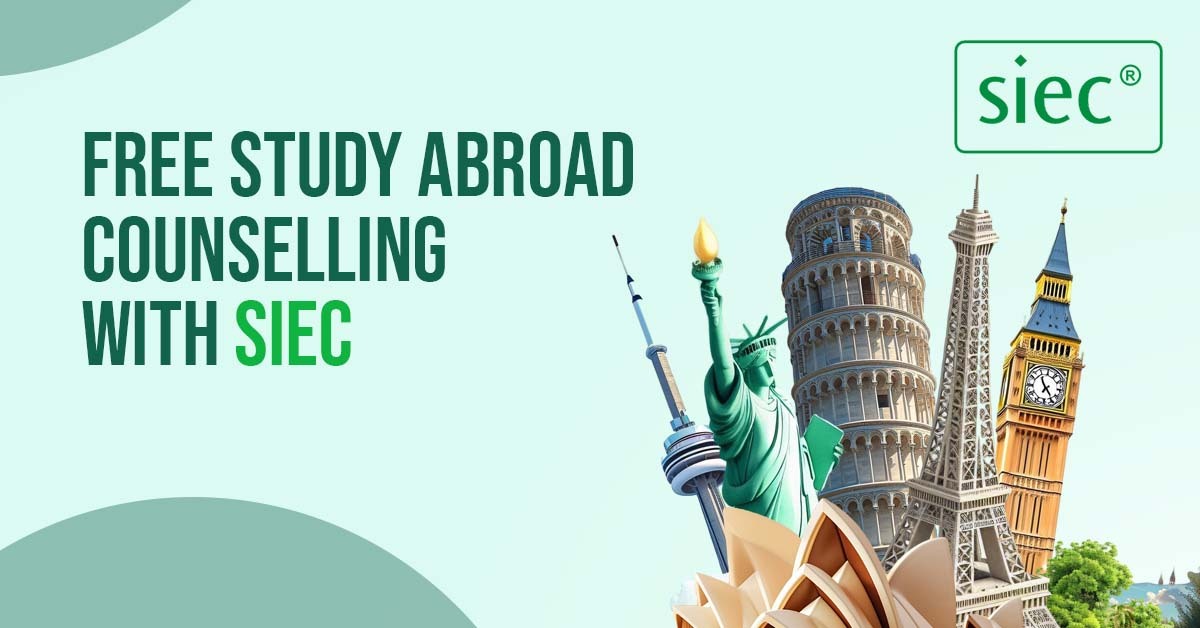
Free Study Abroad Counselling with SIEC
Book a FREE STUDY ABROAD CONSELLING. SIEC is a top study abroad consultancy and has been guiding more than 1 lakhs students towards their global dreams for 30 years now.
https://www.siecindia.com/blogs/free-study-abroad-counselling-with-siecChinese students say they’re questioning their decision to study in the U.S. after Secretary of State Marco Rubio announced that the federal government will attempt to “aggressively” revoke their visas.
Rubio said that Chinese students “with connections to the Chinese Communist Party or studying in critical fields” would be targeted.
Chinese students who spoke to NBC News on Thursday said that they came to the U.S. for freedoms they felt they did not have back in China but that now the Trump administration is starting to resemble the strict regime they left behind.
“USA stands for freedom. It stands for democracy. … That’s why we come here to chase our dreams,” said one Chinese Ph.D. student at a New Jersey university, who requested anonymity out of fear of retaliation. “In China, the government can control education, high schools, colleges, universities. We thought that the USA could be different.”
#siec #overseaseducation #StudyAbroadConsultant #StudyAbroad #StudyOverseas #StudyAbroadPrograms #InternationalEducation #StudyAbroadScholarships #StudyAbroadOpportunities #overseaseducation #TopUniversitiesAbroad #BenefitsOfStudyingAbroad #StudyAbroadRequirements #HowToStudyAbroad #AffordableStudyAbroadPrograms

Study Abroad: Top Countries, Universities & Colleges & More
Want to Study Abroad? Get Free counselling session on top study programs, universities, intakes, scholarships, visa, and application process. Register Now!
https://www.siecindia.com/study-abroad.php
The University of Melbourne | Study in Australia | Apply Now
Apply Here to study in Australia at The University of Melbourne-Australia's No.1 University and World's No.13th. Explore Tuition Fees, scholarships and more.
https://www.siecindia.com/blogs/study-at-the-university-of-melbourne-australia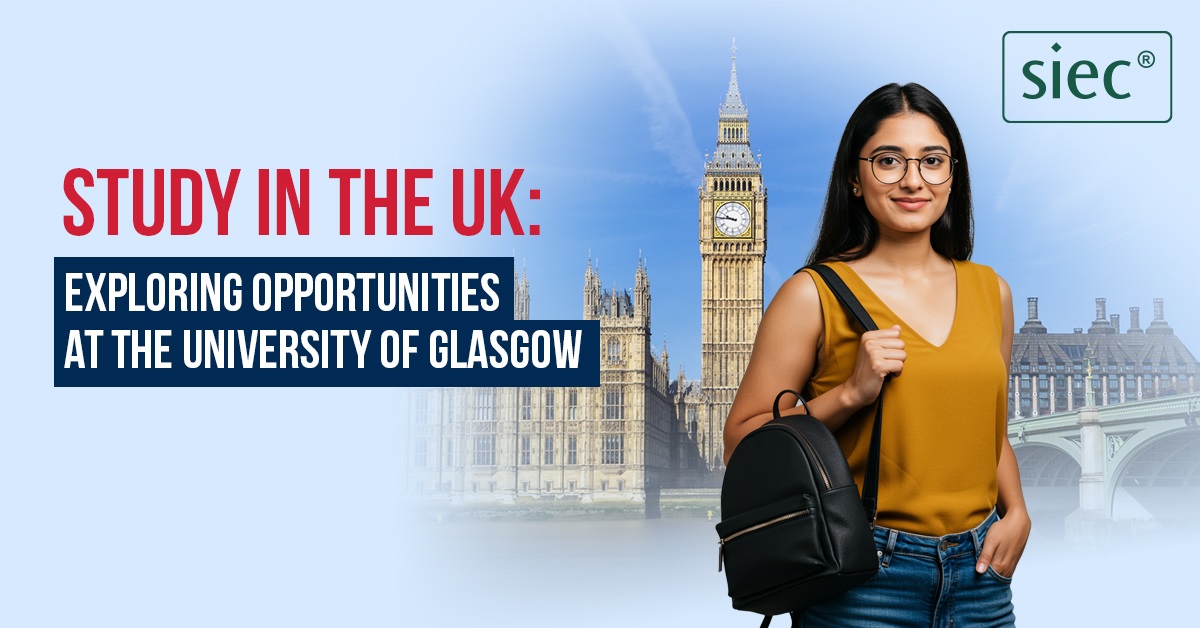
Study in the UK: Exploring Opportunities at the University of Glasgow
Explore world-class education at the University of Glasgow, UK. Discover top courses, scholarships, and global career opportunities. Apply now!
https://www.siecindia.com/blogs/study-at-glasgow-university-ukIn April, Chinese government approved the establishment of 10 new reactors along the coast. Some of these are to come up in geopolitically sensitive areas like the Taiwan Strait or the South China Sea.
China is also home to what has been touted as the world's largest reactor, the 12.5 billion kWh Qinshan Phase III nuclear plant, which became functional in March of this year. The country is rapidly scaling its nuclear energy capacity as part of its efforts to reduce reliance on non-renewable sources and meet climate goals.
However, according to a new PLA study, some sites, especially coastal ones, could become strategic liabilities in wart

Study Agriculture in New Zealand | Study in New Zealand
If you are interested in agriculture, then study agriculture in New Zealand and fast track your pathway to PR. Contact SIEC to talk to NZ visa experts to apply.
https://www.siecindia.com/blogs/study-agriculture-in-new-zealand“President Trump’s post follows a long list of legal threats aimed at discouraging or penalizing independent reporting about the administration. The law is clear and protects a strong free press and favors an informed American public,” the Times said.
The outlet was referencing a social media post by Trump in which the president accused Times journalists of having “TRUMP DERANGEMENT SYNDROME, possibly to the point where the Times’ interjection makes them liable for tortious interference, including in Elections, which we are intently studying.”
The Times laying out an effort by lawyers for the president and Paramount Global to secure a settlement in connection with the lawsuit he filed over an interview with former Vice President Kamala Harris on “60 Minutes,” a CBS News program.


